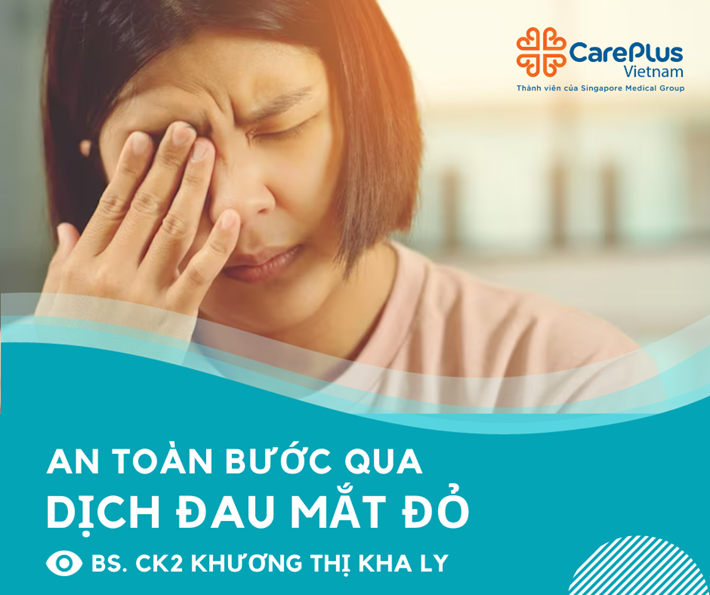SAFELY NAVIGATE THROUGH THE PAINFUL RED-EYE EPIDEMIC
The number of cases of red eye disease (also known as acute conjunctivitis) in Ho Chi Minh City is rapidly increasing. The main causative agent of the disease has been identified as enterovirus (86%).

9/19/2023 8:44:28 AM
The number of cases of red eye disease (also known as acute conjunctivitis) in Ho Chi Minh City is rapidly increasing. The main causative agent of the disease has been identified as enterovirus (86%).
Symptoms of red eye disease include:
Feeling of grittiness or sand-like sensation in the eyes
Discomfort and mild pain in the eyes
Redness and stickiness of the eyelids, especially upon waking up
Swollen eyelids and watery eyes
In some cases, there may be bleeding under the conjunctiva or the presence of false membranes
Occasionally, there may be accompanying symptoms such as swollen lymph nodes, sore throat, mild fever, and fatigue
Characteristics of red eye disease:
Caused by a viral infection
Relatively fast transmission
Most cases resolve within 7 to 14 days
Visual acuity is usually unaffected or only slightly reduced. However, in rare cases, there may be complications affecting the cornea (such as corneal ulcer) leading to visual impairment
Treatment:
Patients experiencing the aforementioned symptoms should seek medical attention from specialized eye clinics
Do not self-administer corticosteroid eye drops (such as dexamethasone) without a doctor's prescription
Avoid introducing foreign objects into the eyes, such as inhaling steam from betel leaves, squeezing lemons, applying plant leaves or aloe vera, using frog or insect secretions, bear bile, urine, breast milk, etc., as this may worsen the infection
Most cases of the disease resolve on their own within 7 to 14 days
Antibiotic eye drops may be used as a preventive measure against bacterial superinfection
The goal of treatment is to provide relief and prevent further transmission within the community
Eye care steps when experiencing red eye disease:
Use prescribed medications correctly
Cleanse the eyelids before instilling eye drops
Use isotonic saline solution (0.9% NaCl) or artificial tears for eye irrigation
Wash hands before and after cleansing/instilling eye drops
Use disposable cotton swabs for wiping the eyes, avoiding the use of towels
Applying cold compress can help reduce swelling and provide comfort
Wear protective sunglasses and regularly clean them
Isolate the patient for 5-7 days
Prevention:
Red eye disease is not directly transmitted from person to person
There are currently no preventive eye drops available
The main mode of transmission is through tears or throat secretions of individuals with red eye disease (which contain the virus)
Patients should wear masks if they have respiratory symptoms, as the disease can be transmitted through tiny respiratory droplets when coughing or sneezing
Clean and disinfect objects such as doorknobs, phones, towels, etc.
Handwashing with soap or using antibacterial solutions is an effective preventive measure
Patients should avoid shaking hands, rubbing their eyes, and sharing towels. Limiting attendance at school or workplace is recommended while the eyes are still red and watery.